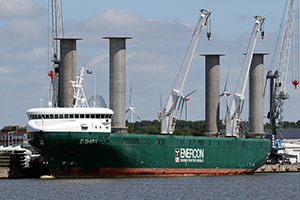Taha Extends New Theory of Lift to Fluid Mechanics

Jan. 26, 2024 - UC Irvine’s Haithem Taha applies mathematical principles from the Age of Enlightenment to discover new insightful concepts in the science of mechanics today.
Last year, Taha, an associate professor of mechanical and aerospace engineering, and his group developed a new theory of lift to solve a century-old technical challenge in aerodynamics. Based on the principle of least curvature, the new theory fundamentally changes how researchers understand flight. In their recent research, published in the December 2023 issue of Physics of Fluids, they extend this work and propose a new approach for solving fluid mechanics problems based on a principle of minimization.
The principle relies on the premise that there is a fundamental physical quantity that nature minimizes in every motion, such as with an orbiting planet, a falling leaf or the vibrating string of a viola. The concept is derived from the principle of least action put forward by the French philosopher/mathematician Pierre Louis Maupertuis. However, Taha says the question is: what is the magic cost that nature seeks to minimize? He looked at incompressible flows, for example water, blood, air, and discovered that it is the total pressure force in the domain - that is Nature’s precious quantity.
“We mathematically proved that when any such flow moves from one point to another, the path it takes is the one that minimizes the cost,” said Taha. “We named it the Principle of minimum pressure gradient (PMPG). So, this technique turns fluid mechanics problems into an optimization problem.”
The finding will allow researchers to study fluid flows using this new principle rather than relying on the standard Newton approach of Navier-Stokes equations. The minimum pressure gradient technique is more efficient and in some cases more insightful, according to Taha. It could enable research areas ranging from theoretical modeling to computational and machine learning techniques.
“When Cody applied it to the flow over an airplane wing section to determine the generated lift force, it led to a new theory of lift that can, for the first time, handle unconventional shapes,” said Taha. “Shorbagy also applied it to the flow over a rotating cylinder, such as the one used on a rotor ship, and we managed to find simple analytical solutions, for the first time, without the need to solve the complicated nonlinear partial differential equation of Navier-Stokes.”
“If someone wants to solve a fluid mechanics problem, such as the airflow over a wind turbine farm or a race car, they can turn to Navier-Stokes equations or alternatively they can minimize the total pressure force,” said Taha. “The PMPG is the first minimization principle of Navier-Stokes' equation, 200 years after the development of the equations.”
Taha’s research continues to shed new light on century old theories in classical mechanics. It was funded by the National Science Foundation and the Air Force Office of Scientific Research. Contributing authors include UCI mechanical and aerospace engineering graduate students Cody Gonzalez and Mohamed Shorbagy.
– Lori Brandt
